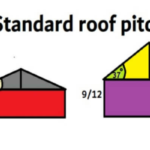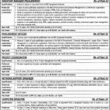Beam analysis is a fundamental aspect of civil engineering, involving the assessment and design of beams to ensure they can adequately support loads. This guide will introduce you to the basics of beam analysis, including the design for bending, shear force, reaction forces, and deflection. It’s not an easy calculation, which is why we at Civils.ai developed a free beam calculator to help with tricky cases on your construction project

Understanding the Basics
1. Structural Analysis: In civil engineering, structural analysis is the prediction of the response of structures to specified external loads. It helps in determining the size and shape of a structure’s members based on estimated loads, ensuring safety and serviceability according to local building code.
2. Beams in Civil Engineering: Beams are key structural members with a longitudinal dimension significantly greater than their lateral dimensions. They are primarily loaded in the longitudinal direction and can have various cross-section shapes like rectangular, circular, I-sections, etc.
Key Principles in Beam Analysis
1. Equilibrium Conditions: For a structure to be at rest under external forces, it must satisfy equilibrium conditions. This means the resultant force and moment acting on the structure must be zero. This principle is essential in determining the reactions at supports and the internal forces within the beam.
2. Compatibility of Displacement: This concept ensures that when a structure deforms under load, its connected members remain fitted together without gaps or overlaps. It’s particularly useful in analyzing indeterminate structures.
3. Principle of Superposition: In linearly elastic structures, the load effects from multiple loadings are equal to the sum of the load effects caused by individual loadings. This principle is crucial in understanding how different loads affect the beam.
4. Work-Energy Principle: This involves understanding that the work done on a structure is equal to the strain energy stored in it. It’s a vital tool in structural analysis.
Internal Forces and Their Analysis
1. Normal Force, Shearing Force, and Bending Moment: These are the primary forces and moments acting on a beam. Normal force is the sum of axial forces, shearing force is the sum of transverse forces, and bending moment is the sum of forces’ moments, all at a given section of the beam
2. Sign Conventions: It’s crucial to understand the sign conventions for axial force, shearing force, and bending moment. For example, a positive bending moment causes concavity upwards (sagging), and a negative one causes concavity downwards (hogging).
Like Us on Facebook!
3. Relationship Among Load, Shear, and Moment: The first derivative of the bending moment is equal to the shearing force, while the second derivative of the bending moment equals the intensity of the distributed load. These relationships are critical in developing shear and moment diagrams for beam analysis.
Subscribe Us on YouTube!
Calculating Reaction Forces and Analyzing Shear and Moment
1. Reaction Forces: To calculate the reaction forces at the beam supports, apply the equilibrium principle to the entire structural system, considering both horizontal and vertical forces and moments.
2. Shear and Moment Analysis: This involves expressing shear (V) and moment (M) as functions of position (x) on the beam. The analysis is done segment by segment, considering the varying load conditions along the beam. Understanding the internal shear and moment at each segment is key to designing a safe and effective beam.

Practical Steps in Beam Analysis
1. Drawing Free-Body Diagrams: Begin by sketching the beam with all applied loads and reactions. This helps in visualizing the forces acting on the beam.
2. Computing Reactions at Supports: Use equilibrium equations to calculate the unknown reactions at the supports. Double-check these calculations for accuracy.
3. Segment Analysis: Analyze each segment of the beam by cutting it at a distance ‘x’ from a chosen origin and applying equilibrium principles to calculate the internal shear force and bending moment at that section.
4. Shear and Moment Diagrams: These diagrams graphically represent the variation of shear force and bending moment along the length of the beam, providing a visual understanding of how the beam behaves under loading.
Conclusion
Beam analysis is integral to the design and safety of structural elements in civil engineering. By understanding and applying the principles of structural analysis, equilibrium, compatibility of displacements, and the relationships between loads, shear forces, and bending moments, civil engineers can effectively design beams to withstand the demands of their intended applications. Remember, this guide provides an overview, and further detailed study is recommended for practical application in the field. Check out our work at Civils.ai if you are interested in learning more about Structural Engineering and our work developing Construction AI.



















